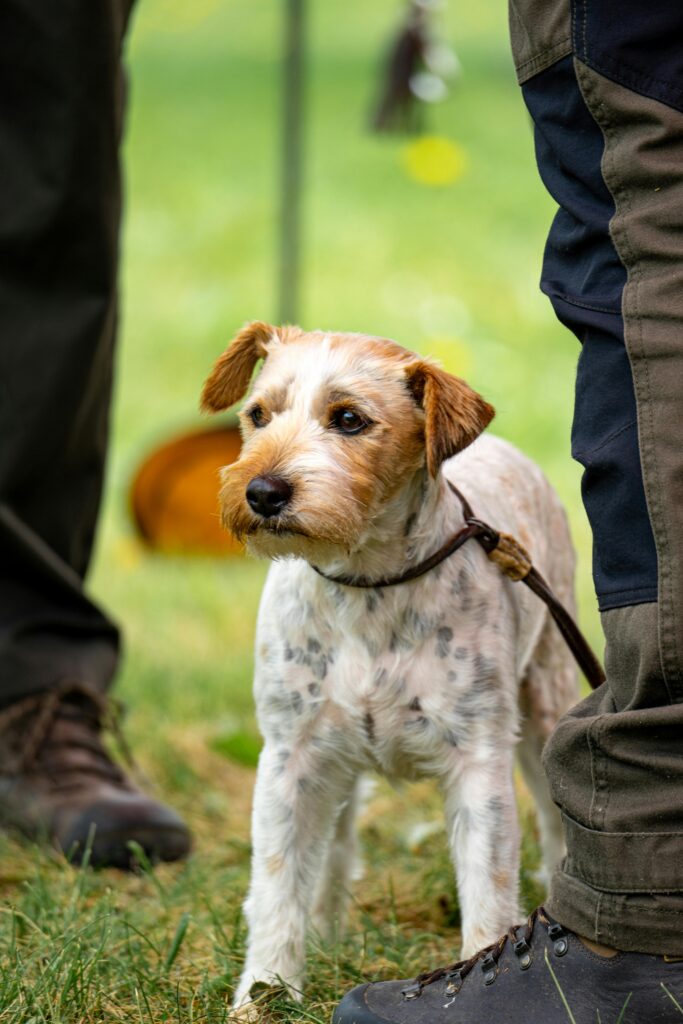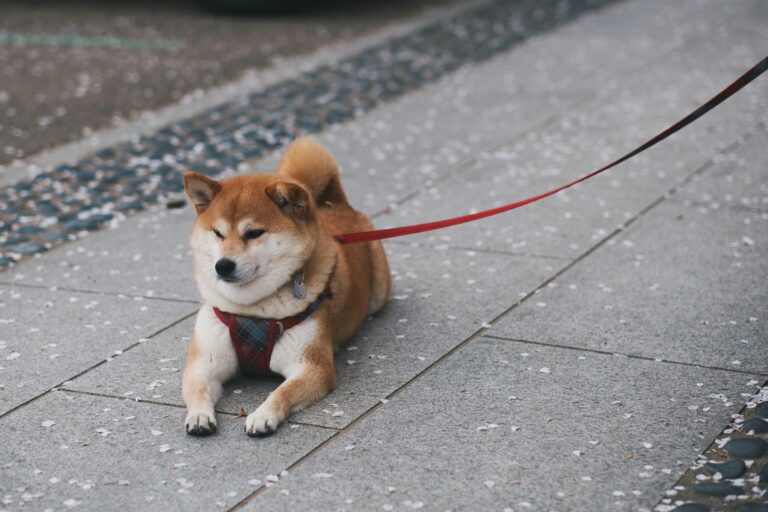Fall is the perfect season for getting outside with your dog. Cooler temperatures, changing leaves, and wide-open trails invite you and your pup to explore. But if walks feel more like a battle of wills than bonding time, it’s probably time to rethink your leash training.
Loose leash walking is one of the most requested skills at our Springfield training center, and for good reason. A dog that pulls, lunges, or zigzags can turn even the most beautiful hike into a frustrating experience. The good news is, with the right tools, consistency, and guidance, your dog can learn to walk calmly by your side.
Let’s break down exactly how to get there before the fall season hits full stride.

Why Loose Leash Walking Matters
Loose leash walking isn’t about forcing your dog to “heel” in a rigid position. It’s about communication and cooperation. A dog that walks politely on leash:
- Is less likely to injure you or themselves
- Responds better to cues and redirection
- Is safer to walk around distractions and traffic
- Can enjoy longer outings without correction or tension
Pulling isn’t just annoying, it’s often a sign of overexcitement, lack of structure, or missing obedience foundations. Teaching this skill gives you both the freedom to enjoy walks again.
1. Start With the Right Equipment
Before diving into loose leash walking, make sure you’re using gear that sets your dog up for success:
- A fixed-length leash (4 to 6 feet)
- A well-fitted collar or training tool (avoid retractable leashes)
- High-value treats or rewards
- Patience and a calm mindset
Avoid harnesses designed for sled dogs or constant pulling. Instead, opt for equipment that allows clear communication without pain or confusion.
Need help choosing between collars and harnesses? The AKC breaks down the pros and cons of each to help you find the best fit for your training goals.
2. Use a Marker Word and Timing
Dogs learn best through clear feedback. A well-timed marker word (like “yes”) lets your dog know exactly when they’re doing the right thing.
Start in a distraction-free area and follow this simple flow:
- Say your marker word the moment the leash goes slack
- Immediately reward your dog with a treat or praise
- Resume walking and repeat every few steps
This helps your dog understand that being near you without pulling earns good things.
3. Be Consistent With Your Stops
One of the most effective loose leash walking strategies is “be a tree.”
If your dog starts pulling:
- Stop walking
- Don’t yank or scold, just wait
- The moment they return or check in with you, mark and reward
- Resume walking calmly
This teaches your dog that pulling gets them nowhere, while calm walking brings progress.
4. Introduce Distractions Slowly
Fall trails, parks, and town squares are full of tempting distractions: squirrels, falling leaves, other dogs, and kids on bikes. Introduce these elements after your dog has a solid foundation.
Start by walking near distractions at a distance. If your dog can stay focused:
- Reward generously for engagement
- Use cues like “look at me” or “leave it”
- Gradually move closer over multiple sessions
For dogs who struggle with leash control, this blog on common loose leash walking mistakes covers exactly how to troubleshoot and reset your approach.
5. Build in Structured Breaks
Dogs need time to sniff and explore, but it should be on your terms. Use a cue like “free” or “go sniff” to release them from structured walking.
This reinforces:
- Self-control
- Clear communication
- The difference between training and play
Structured breaks also reduce the buildup of frustration that can lead to pulling or barking.
6. Stay Calm and Patient
Leash training takes time, especially if your dog has developed habits over months or years. Stay consistent, celebrate small wins, and avoid harsh corrections.
You want your dog to view walks as a partnership, not a power struggle.
7. Get Professional Help if Needed
If walks are still stressful or your dog is reactive in public, personalized support can make a huge difference. Our Basic Obedience Program teaches leash manners from the ground up, with real-world training in parks, neighborhoods, and busy settings.
We tailor each session to your dog’s age, energy level, and specific struggles so you can walk with confidence again.
Final Thoughts: Walk Into Fall With Confidence
The fall season is calling, and so is the leash. Whether you’re hiking trails, strolling festivals, or just enjoying your neighborhood, loose leash walking gives you the freedom to enjoy every moment with your dog.
Put in the work now, and by the time the leaves change, you and your pup will be moving as one.
Let’s get your walks back on track. Contact us today to schedule your personalized leash training session.

